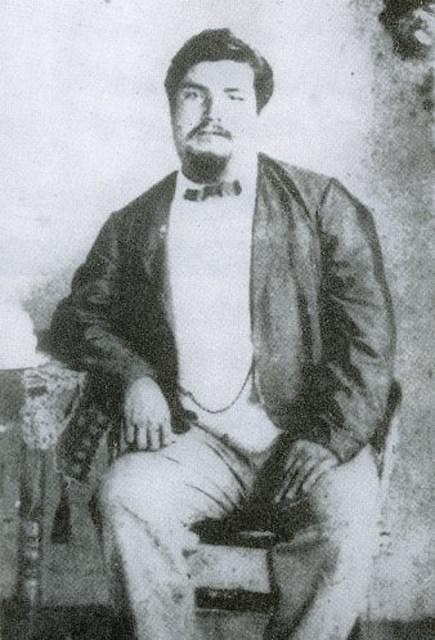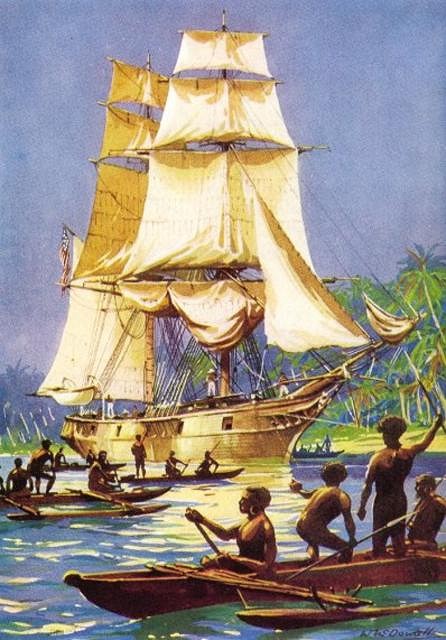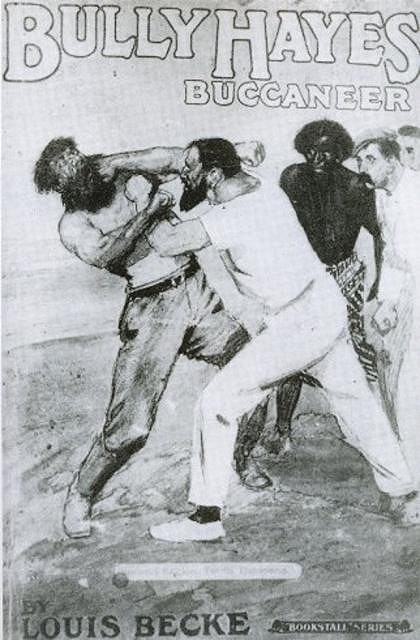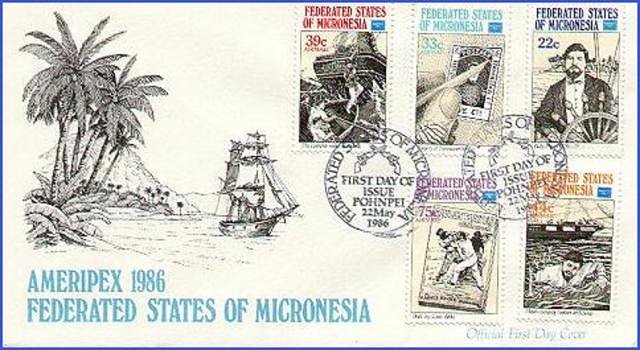Tiki Central / Tiki Drinks and Food / The real Dr. Funk
Post #626507 by TikiTomD on Sun, Feb 26, 2012 8:34 AM
|
T

TikiTomD
Posted
posted
on
Sun, Feb 26, 2012 8:34 AM
Well said, Porpoise! :) CN, completely agree with you... that photo is going to find a place of honor somewhere proximate to my home Tiki bar. After spending a bit of time reading Leilani Burgoyne’s paper, it’s clear that she did a masterful job reconstructing the life and times of Dr. Funk, assembling a myriad of vignettes from a multitude of sources into a coherent and satisfyingly complete story. I’ll share a few highlights from her paper. Dr. Funk’s initial foray into matrimony occurred within a year of his arrival at Apia, Samoa in 1880. It was a short-lived and disastrous marriage to Leonora Hayes, beautiful fifteen year-old daughter of the infamous American pirate, Captain William Henry “Bully” Hayes. It seems that Dr. Funk’s late father-in-law had been dispatched in 1877 after a violent confrontation with “Dutch Pete” (the ship’s cook) on a voyage from the Marshall Islands to Ascension (Pohnpei) and Strong’s (Kosrae) Islands in the Caroline group. The widowed New Zealand-born Emily Hayes and her two teenage daughters remained in Apia, the little “Cairo of the Pacific,” at the time of Dr. Funk’s arrival. The marriage ended within six months in a publically humiliating way for Funk, as his wife sought divorce on grounds of cruelty, alleging that he had beaten her. Burgoyne’s research suggests that Dr. Funk was likely the victim of a scheme to fleece the presumably rich newly-arrived German doctor by an unscrupulous family in dire financial straits. When Leonora left Funk, she took with her their infant son, Conrad Funk. The son was apparently known around Apia as Fred Hayes. Dr. Funk provided for the expenses of his child, and archival records indicate that his son took the old doctor in years later when he fell ill. Bully Hayes, notorious South Seas pirate and blackbirder (slave trader), was born in Cleveland, Ohio. Jane Resture’s Oceania web site has a wealth of information on the subject. From her web site comes the only known photograph of Dr. Funk’s former father-in-law...
Hayes named one of his ships the Leonora, after his favorite daughter. Here’s a William McDowell painting of it, also from Jane Resture’s web site...
An Australian, Louis Becke, delivered a ketch to Bully Hayes and rode as a passenger on the Leonora. A colorful character in his own right, he later wrote about Hayes...
One of his stories, “Concerning ‘Bully’ Hayes,” excerpted from The Strange Adventure Of James Shervinton and Other Stories (1902) can be freely accessed online as a Project Gutenberg eBook. Here Becke introduces Hayes (caution to the reader: remember that Becke’s words reflect the colonial usage of the times and that Hayes was engaged in the slave trade)...
It’s kind of curious that the Federated States of Micronesia issued postal stamps in 1986 depicting various events surrounding Hayes...
-Tom |




